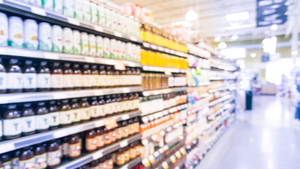Digital grocery expected to grow in 2023Digital grocery expected to grow in 2023
Online sales are increasing, but challenges remain
December 20, 2022

The use of digital technologies by both shoppers and grocery store associates are forecast to increase in 2023, but improvements are necessary if retailers are to maximize performance.
Research from Grocery Doppio, an independent source of grocery data from research firm Incisiv and digital commerce provider Wynshop, found that 87% of shoppers will use digital ordering to make grocery purchases next year with a 16% increase in the number of pickup orders.
Such activity will help to maintain digital’s strong growth momentum. Digital grocery sales totaled $14.7 billion in November up 24.6% from $11.8 billion in October, with digital accounting for 17.1% of all November grocery sales, Grocery Doppio said in its November State of Digital Grocery Performance Scorecard.
Digital basket sizes also are on the upswing, with the average digital orders increasing 12.1% to $89.60 from October to November with an average increase of two items per basket. The average overall grocery basket size was $59.10, a gain of 12.1%.
Among digital channels, 74.1% of activity, accounting for $10.9 billion, came from direct website purchases, up from $8.6 billion in October. In addition, 19.7% of activity, or $2.9 billion, came via third parties, up from$2.5 billion a month earlier, with apps responsible for $6.2% of activity or $900 million, up from $700 million.
Home delivery sales by grocers accounted for 26.1% of all digital sales.
Pickup sales, meanwhile, accounted for 54.2% of all digital grocery orders in November, a 0.5% increase. Pickup basket size accounted for 46.4% of overall digital sales, up 0.3% from October, while the basket size for delivery orders comprised 53.3% of all digital orders, down from 53.6%.
Greater overall grocery shopper activity in 2023, meanwhile, will likely fuel greater digital sales. Grocery Doppio forecasted an increase of between 3% and 7% in grocery spending by consumers next year with 67% of grocery customers also indicating that they will maintain or increase their spend on typically higher margin prepared food in 2023.
But competition within the digital sector is also likely to heat up, as 81% of grocers believe that third-party platforms will be their direct competitor, and 59% of the retailers claim that their third-party delivery platforms are unprofitable.
The share of activity on third-party platforms has decreased 24.7% to 19.7% over the past three months, Grocery Doppio said, noting that “grocers have taken more ownership of the digital experience and the website is the primary source of digital sales.”
While digital tools are generating more supermarket sales, grocers also are increasingly leveraging the technologies to support operations. But many users are dissatisfied with online operations.
Grocery Doppio found that 73% of store associates are unhappy with their digital tools, such as for communications, and 81% of grocery executives believe upgrading their store technology is critical to meeting their digital growth.
Responding to such needs, however, may be difficult as operators project an average 0.7% decrease in grocery technology budgets in 2023 compared to 2022, and note that lack of technology talent is one of the top challenges facing grocers next year, Grocery Doppio said.
About the Author
You May Also Like






